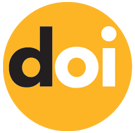Multimedia based learning in the basic lessons of electricity and electronics to improve SMK student competency
Keywords:
learning medium, multimedia equipment, multimedia learning, quality management, student competenceAbstract
Management of education quality refers to the National Education Standards. The purpose of this study was to determine: (1. Multimedia learning planning to improve student competence (2) Organizing multimedia learning to improve student competence (3) Implementing multimedia learning to improve student competence (4) Evaluating multimedia learning to improve student competence (5) Multimedia learning outcomes to improve student competence (6) Inhibiting factors for multimedia learning in increasing student competence Qualitative descriptive methods to describe phenomena that occur realistically Data collection techniques (1) Interview (2) Observation (3). Documentation The conclusion of the study shows that the two SMKN schools have not been optimal in terms of planning, organizing, implementing, evaluating, and multimedia learning outcomes to improve student competence in basic electricity and electronics subjects. The principal fully supports all multimedia equipment facilities and requires subject teachers to use multimedia as a learning medium.
Downloads
References
Alexander, S., & Hedberg, J. (1994). Evaluating technology-based learning-which model. In IFIP TC3/WG3. 2 Working Conference on the Design, Implementation and Evaluation of Interactive Multimedia in University Settings (pp. 233-244). Elsevier. Chang, C. C., Liang, C., Chou, P. N., & Lin, G. Y. (2017). Is game-based learning better in flow experience and various types of cognitive load than non-game-based learning? Perspective from multimedia and media richness. Computers in Human Behavior, 71, 218-227. https://doi.org/10.1016/j.chb.2017.01.031
Arjawa, A. G. P., Sariyasa, S., & Suweken, G. (2018). Developing instructional multimedia for teaching line and angle to the seventh grade students of junior high school. International Research Journal of Engineering, IT and Scientific Research, 3(5), 66-75.
Brett, P. (1995). Multimedia for listening comprehension: The design of a multimedia-based resource for developing listening skills. System, 23(1), 77-85. https://doi.org/10.1016/0346-251X(94)00054-A
Chachil, K., Engkamat, A., Sarkawi, A., & Shuib, A. R. A. (2015). Interactive multimedia-based mobile application for learning Iban language (I-MMAPS for learning Iban language). Procedia-Social and Behavioral Sciences, 167, 267-273. https://doi.org/10.1016/j.sbspro.2014.12.673
Evans, C., & Gibbons, N. J. (2007). The interactivity effect in multimedia learning. Computers & Education, 49(4), 1147-1160. https://doi.org/10.1016/j.compedu.2006.01.008
Grosseck, G., & Holotescu, C. (2010). Microblogging multimedia-based teaching methods best practices with Cirip. eu. Procedia-Social and Behavioral Sciences, 2(2), 2151-2155. https://doi.org/10.1016/j.sbspro.2010.03.297
Han, I., Eom, M., & Shin, W. S. (2013). Multimedia case-based learning to enhance pre-service teachers' knowledge integration for teaching with technologies. Teaching and Teacher Education, 34, 122-129. https://doi.org/10.1016/j.tate.2013.03.006
Hayat, B., & Yusuf, S. (2010). Benchmark internasional mutu pendidikan. Jakarta: Bumi Aksara.
Hwang, W. Y., Wang, C. Y., & Sharples, M. (2007). A study of multimedia annotation of Web-based materials. Computers & Education, 48(4), 680-699. https://doi.org/10.1016/j.compedu.2005.04.020
Leutner, D. (2014). Motivation and emotion as mediators in multimedia learning. Learning and Instruction, 29, 174-175. https://doi.org/10.1016/j.learninstruc.2013.05.004
Makawimbang, J. H. (2011). Supervisi dan peningkatan mutu pendidikan.
Mayer, R. E., & Moreno, R. (2002). Aids to computer-based multimedia learning. Learning and instruction, 12(1), 107-119. https://doi.org/10.1016/S0959-4752(01)00018-4
Munir, F., Nielsen, K., Garde, A. H., Albertsen, K., & Carneiro, I. G. (2012). Mediating the effects of work–life conflict between transformational leadership and health?care workers’ job satisfaction and psychological wellbeing. Journal of nursing management, 20(4), 512-521.
Pidarta, M., & Kependidikan, L. (2013). stimulus ilmu pendidikan bercorak Indonesia. Jakarta: Rineka Cipta.
Sallis, E. (2010). Integrated Quality Management. Bogor: IRCiSoD Publisher
Sanusi, A. (20120). 6 Life Value System (Lecture Materials Education Facts, Policies, Philosophy Theory). Bandung: Uninus
Sobahi, K. (2010). Education Management. Bandung: Chakra.
Sugiyono, (2011). Educational Research Methods: Quantitative Approaches, Qualitative, and R & D. Bandung: Alfabeta
Sutarman, A. L. N. (2020). Manajemen Strategi Pendidikan Karakter Peserta Didik.
Suyono, H. (2011). Belajar dan pembelajaran. Bandung: Remaja Rosdakarya.
Published
How to Cite
Issue
Section
Copyright (c) 2021 International journal of business, economics & management

This work is licensed under a Creative Commons Attribution-NonCommercial-NoDerivatives 4.0 International License.
Articles published in the International Journal of Business, Economics & Management (IJBEM) are available under Creative Commons Attribution Non-Commercial No Derivatives Licence (CC BY-NC-ND 4.0). Authors retain copyright in their work and grant IJBEM right of first publication under CC BY-NC-ND 4.0. Users have the right to read, download, copy, distribute, print, search, or link to the full texts of articles in this journal, and to use them for any other lawful purpose.
Articles published in IJBEM can be copied, communicated and shared in their published form for non-commercial purposes provided full attribution is given to the author and the journal. Authors are able to enter into separate, additional contractual arrangements for the non-exclusive distribution of the journal's published version of the work (e.g., post it to an institutional repository or publish it in a book), with an acknowledgment of its initial publication in this journal.














